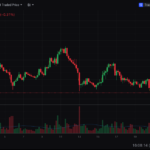Ethereum has quietly crossed a massive milestone: over 35 million ETH is now staked, representing 28.3% of the total circulating supply. At current prices, that’s more than $84 billion locked away—not tradable, not moving.
On the surface, this signals strong confidence in Ethereum’s proof-of-stake model. But under the hood, a few red flags are flashing.
🚀 Record-Breaking Staking Surge
Since the Merge, ETH staking has steadily climbed—and June was no exception. More than 500,000 ETH were added to validator pools in just the first two weeks. The appeal is clear: passive yield and network support.
But here’s the twist—three major entities now control nearly 40% of validator power: Lido, Binance, and Coinbase. Lido alone handles 25% of the total stake.
This raises the uncomfortable question: What happens if one goes offline—or worse, acts maliciously?
🪙 Supply Shrinks, Volatility Rises
The amount of ETH that’s easily tradable is shrinking fast. After accounting for staking and long-term holders, less than 53% of ETH remains in circulation. That’s the lowest since Ethereum’s transition to PoS.
As supply dries up, order books get thinner and price swings become more volatile. On DeFi lending platforms like Aave and Compound, borrowing costs for liquid staking tokens like stETH and rETH are rising—fast.
🏢 Institutions Are Quietly Buying In
Despite the risks, big money is stepping in. Firms like SharpLink Gaming have made ETH their primary treasury asset, betting on long-term yield and Ethereum’s role in future finance.
Add to that the recent approval of ETH spot ETFs and favorable U.S. regulatory guidance, and you’ve got the perfect recipe for institutional inflows.
⚖️ A Decentralization Debate Rekindled
The flip side of this success? A growing concern that Ethereum is becoming too centralized—at least at the validator level.
Ethereum’s security model depends on decentralization. If block validation is too concentrated, the network risks censorship and governance capture. Developers and community members are planning discussions for late July to address this head-on.
📈 Strategic Takeaway
Ethereum’s record staking level paints a picture of strength—but not without complexity. Reduced supply may push prices higher, but concentration risk and network centralization could be trouble in the making.
For investors and traders, the takeaway is clear: Ethereum is maturing, and institutions are paying attention. But it’s not without growing pains.
Disclaimer: This article is for informational purposes only and does not constitute financial or investment advice. Always do your own research.







